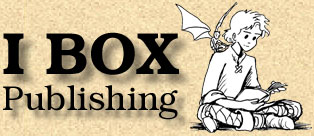|
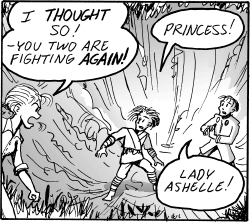
Okay. Now that we've looked at Apple, it's time to explore the other side of the river. Time to look at Amazon.
Brief history:
Jeff Bezos launched Amazon.com during the tech boom of the mid-90's. Their first book sale was packaged on a table made from a spare door found in the house he'd just moved into. Many popular megacorps like to maintain homey creation mythologies, and at Amazon it's all about spare doors. To this day, their offices feature desks made out of doors.
On July 15th, 1995, Amazon.com opened for business as an on-line book seller.
Amazon operated in the red for half a decade, growing slowly but steadily, finally distributing its first meager shareholder profits skimmed from revenues of about a billion dollars in 2001. A billion dollars! That's a pretty significant operation. When a billion dollars can change hands with everybody directly involved earning a tidy income. . , well it's quite something when the whole operation can still technically be running at a net loss from the investor's perspective. That gives us an idea of their scale and scope. By 2001, however, Amazon started posting regular profits.
And so. . .
They grew, and as they did, they stretched forth their long arms and bought up a bunch of other enterprises. -One of the most publicly notable of which was the Internet Movie Database, which now serves Amazon as both a marketing tool and a means of generating advertising revenue.
Amazon also now sells 'cloudspace'. A smart move. Having had to secure their own server farms for their own needs, it only made sense to sublet some of that computer and bandwidth power to a secondary customer base in order to offset their own operating expenses, (and make some more money in the process). Amazon plays it cagey on every angle. Today they are the biggest public cloud service provider on the planet and are growing fast.
And so Amazon now dominates high and low, from the retail merchandise biz, from books to bicycles, to supplying the very life blood of the internet itself. The end.
. . .
Okay. . , so that's their public profile, but what kind of business practices do they embrace? Knowing their corporate character is important to those considering doing business with Amazon. As it happens, the general sense among publishers is anything but encouraging.
As you may be aware, there have been many complaints from far and wide about Amazon's bullying tactics which have left small businesses feeling cornered and loose around the belt. Amazon is being called "The Walmart of the Internet", and my own experience with them as a small publisher does nothing to dispel this notion. . .
I first listed Thieves & Kings on Amazon in 1999, and whaddayouknow, the sales began in earnest. Every week, Amazon would report a handful of orders for each title. So far, so good.
But once I tallied up the sales and my cost of doing business, it became quickly clear just how ridiculous the whole thing was.
The system with Amazon worked like this:
Amazon ordered my books at a 50% discount on the cover price. Aside from the original printing expenses, I also needed to pay to ship books to them, expenses which have to be covered from my 50% share.
Amazon, incidentally, (with some exceptions), doesn't pay to ship to the customer; that cost is borne by the reader. This leaves Amazon's expenses entirely based on warehousing and internet costs, which essentially makes them a middleman broker of sorts, which would be fine if they were not demanding a bulk discount on books while ordering only non-bulk quantities. For me, that was a problem.
When they would run out of stock, (which they did frequently since they only ever held one or two copies of my books in warehouse), they would order another one or two copies from me. As a result, I found myself sending dozens of small order packages off to Amazon through the mail at about $10 or more per package. The shipping cost of sending dozens of these small packages adds up. In the final calculation, I discovered that I'd actually been losing a dollar or two per sale every time somebody hit the 'Buy' button on Amazon's website.
Well, that doesn't work, does it?
There was also another curious incident. . .
Entirely due to an error on my part I chanced to discover something about Amazon which I found particularly revealing. One day when shipping books I accidentally mis-labeled a box destined for Diamond Comics Distribution, incorrectly addressing the box instead to the Amazon warehouse. 50 copies of the first T&K book wound up in Amazon's hands.
I've only ever made a similar error once before, several years prior sending the wrong package to the wrong comics distribution company. In that instance, I received an email informing me of the error and we were able to correct it easily enough. With Amazon however, there was no notification. The box was just gone, but curiously, for the next two months the reported sales of the first T&K book dropped to zero, while sales of books 2, 3 and 4 continued to move as usual. Then after about enough time had passed during which 50 copies would normally sell, the orders to me for the first book started up once again, trickling in one and two at a time. It seemed clear that Amazon had simply stocked and sold those 50 errant copies and didn't pay for them.
Now that's interesting, because it means those 50 copies, even though they hadn't been ordered and had no Purchase Order Number, (the universal means of tracking inventory in the book world), wound up in their sales system regardless, but generated no reporting. In a tightly regimented distribution system like Amazon's, such things simply don't happen by accident. Rogue packages cause hiccups. This suggests to me that Amazon's system had been deliberately designed to profit from such errors. Neat trick.
It's just a little thing, but it indicates much, and indeed, it holds true to Amazon's character as a corporate citizen. It shows they are not 'nice' players and have no intention of being nice players. To be clear, they will stab you in the back if you drop your guard; an example of Game Theory in action. The psychopath's rule of order. --Which is a damned shame, because the Amazon model could have been something truly graceful, one beneficial to everybody. Think of it! A vast internet catalog of all books everywhere? What if all bookstores collectively paid into such a system, like the Yellow Pages, and everybody from author, publisher to end reader all profited together? There are many, many different ways it could have been something wholesome and amazing. But instead it's. . , something else.
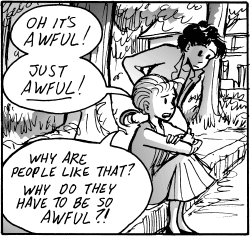
The analogy of the psychopath is quite apt in this case; with a charming public face, the end customer is generally very happy with Amazon. Customers get great deals and lots of choice and so they give all their support to such an upstanding corporate citizen. But behind closed doors. . . The cost to the community as a whole, publishers, authors and retails both large and small, is huge. Amazon's history is rife with bullying tactics which slip often into grey legal areas.
Colin Robinson notes in his article, "The Trouble with Amazon". . .
Dennis Loy Johnson, co-publisher of the Brooklyn-based independent Melville House, is one of the few publishers who have dared to speak openly about Amazon's bullying. His story is far from atypical. In 2004 a representative of the retailer contacted Melville's distributor demanding an additional discount. Such payments are illegal under antitrust law, which precludes selling at different prices to different customers. Large retailers circumvent this restriction by disguising the extra discount under the rubric of "co-op," money paid to the bookseller for promotional services, often notional. In this case the distributor did not bother with such niceties, describing what Amazon was after as "kickback."
Johnson resisted Amazon's pressure and complained to Publishers Weekly about what he saw as the retailer's capo-like tactics. What happened next evidently still rankles. "I was at the Book Expo in New York and two guys from Amazon came to see me. They said that the company was watching what we were doing and that they strongly advised us to get in line. I was shocked at how blatant the pressure was." Within a couple of days Johnson noticed that the buy buttons for his books had been taken off Amazon's site, making Melville's titles unavailable.
[...]
In addition to regularly offering bestsellers at more than 50 percent off, Amazon offers a wide range of titles for around a third off the recommended price. Such low prices have forced its competitors to follow suit. Last October Wal-Mart declared a price war on the online retailer. As part of the offensive, the big box store announced that it would sell Stephen King's 1,074-page Under the Dome at just $10. Amazon promptly matched Wal-Mart's discount; the two competitors then lowered the price by another dollar, selling at nearly 75 percent off the publisher's $35 recommended retail price.
Of course, everyone loves low prices, but as with breadth of choice, the matter is more complex than it first appears. To achieve such low prices retailers must seek ever deeper discounts from publishers. A decade ago the average wholesale discount for a book was in the region of 40 percent. Today it's more like 50 percent, and for many of the large outlets it can be 60 percent or more. Amazon clearly anticipates that the trend of deeper discounts and lower prices will continue. One prominent British publisher told me his sales director returned from a visit with Amazon at which he had been forced to grant better terms. "The good news," he reported back, "is they said I don't have to go in and see them again for eighteen months."
Another London publisher, head of a well-known transatlantic university press, complained about the way Amazon undermined his company's efforts to sell its titles direct. "They told us, in no uncertain terms, that if we tried to match the reduced price at which they were selling our titles they would take the lower price as the basis for calculating their discount, allowing them to price-cut still further."
[. . .]
Authors, too, can be added to the list of price-cutting's victims. In the fall of 2008, as the crisis of publishing began, a boss at Scribner, where I was a senior editor for two and a half years, announced at an editorial meeting that when it came to advances, "$50,000 is the new $100,000." Speaking with agents at this spring's London Book Fair, I found widespread corroboration that advances had indeed dropped precipitously.
This is partly a reflection of the overall dismal state of the market. US book sales fell by nearly 2 percent in 2009, after a drop of more than 2.8 percent the previous year. It is also related, however, to a clause in many publishers' contracts that reduces royalties paid to authors if sales are made to booksellers at a high discount, in some cases reducing the royalty by half. In this respect publisher, bookstore and customer appear to benefit from the lower price at the expense of the author. But lower advances and royalties make for less-well-researched books and an author pool increasingly populated by hobbyists rather than those whose primary qualification is the ability to write.
-- www.thenation.com
It's not just publishers and authors, of course, who are being been squeezed by the big 'A'. Brick and Mortar retailers, as we well know, are being hurt, but it is not simply through survival of the most popular competition, but rather through genuinely shady practices. . .
On big ticket items (computers, TV's, etc.) Amazon.com has a significant price advantage over local retailers in most U.S. States. A TV store in Chicago, for example, has to collect 9.75% sales tax on every TV they sell. On a $1500 flat screen, that's $146.25 in taxes. Amazon.com, however, does not collect sales tax because of an obscure 1992 Supreme Court ruling. As a result, Amazon.com can sell the same TV for $146 less than the local store in Chicago.
thetruthaboutamazon.com
Hmm. . .
So that's Amazon. Now that we know a bit more about the nature of the beast, we can look at their eBook sales system with a better understanding of what we find there. . .
Let's take a look at a Stardrop eBook, and what would need to happen in order for it to earn a "Buy Now" button on Amazon's website.
First of all, let's examine the details of Amazon's upfront boilerplate contract:
Amazon takes a 30% cut off the top of the eBook's cover price. A cover price which is not allowed to be more than $9.99 Further, your eBook must be priced at least 20% less than any hard copy paper version. (Since the paper version of Stardrop is $10.00 in comic shops, Amazon will not allow the digital version to sell for any more than $7.99.) --Also, I would not be allowed to sell my eBook for less anywhere else. If I do, Amazon will automatically update the price on my book to match or beat that lower price without my consent.
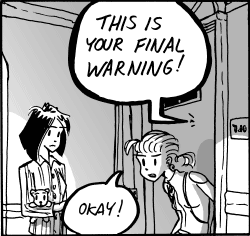
The IRS takes another 30%. This is due to Amazon being an American company and my being a Canadian. There are, however, tax treaties in place between our two countries, (and many others; Canadians are not the only ones subject to IRS attentions). If I manage to secure a Tax Identification Number (a TIN), then I can apply for tax treaty status and reduce the amount held back for IRS tax. -Getting a TIN involves a fair about of hoop jumping. One of those several hoops includes securing a letter (non-photocopied, inked signature) from Amazon declaring that I am doing business with them. Not very surprisingly, Amazon doesn't offer any way to obtain such a letter from them. At least none that I've found.
$0.15 per megabyte per download. For a 200 page graphic novel, that's about 20Mb, or $3 in bandwidth fees, (which is a whole lot more than it would cost to host it yourself, but Amazon is in the handy position of being able to force their pricing on you.)
The end result?
Assuming I can't get an IRS number, pricing an eBook at $5.00, would end up losing $1.00 on every sale.
The break even point, where I don't actually lose any money? That would be $7.50
Priced at $9.99 the Canadian author of a 200 page graphic novel makes a grand total of $0.99 That is, Amazon and the IRS split up nine dollars between them, and you get a penny shy of a buck.
Now IF you manage to get your paperwork in order and get an IRS number, the pie division gets better. For Canadians, the tax treaty in place can cut the IRS take down to a maximum of 10%. I happen to be in the fortunate position of working with a U.S. publisher on an entirely different project, who will be much more helpful in providing the right documents, and once obtained, the TIN can be applied everywhere, so Amazon's stone-wall tactics can be circumvented. (It's anybody's guess if Amazon is even really submitting the tax they collect to the government and not simply tucking it away, but given their history with tax evasion. . .)
So anyway, these improved numbers on a 20Mb eBook, assuming a 10% IRS cut are:
$5.00 cover price - Break even (make $0.00) per copy.
$9.99 cover price - Make $2.99 per copy.
The problem with that is, as noted above, the cover price on the physical paper version of Stardrop in comic shops is $10.00, and Amazon will not work with you unless you price the digital version a minimum of 20% less than the price of any paper version. So in the case of a digital edition of the first Stardrop graphic novel, the most I can ask for on Amazon's site is $8.00 per copy.
After Amazon, the IRS and bandwidth fees, on an $8.00 digital edition of Stardrop, I would make a grand total of $1.80, or 22.5% On my own book.
By contrast, Amazon after taking their 30% plus the profit from force-selling me $3 worth of vastly over-priced bandwidth, gets $5.40, or 67.5%
And that's the BEST possibility I could hope for.
So is it worth publishing a graphic novel through Amazon?
In a word, No. Not if I have any self respect.
In this way, Apple's deal through the iBook store actually works out better than Amazon. Wow. (Though their deal is similarly sketchy and the creator, as per usual, winds up getting gouged.)
Luckily, there are other ways of going about all of this. . .
Next week, Comics and the New Media, Part IV
Are these the Droids you're looking for. . ?
-Cheers!
Mark
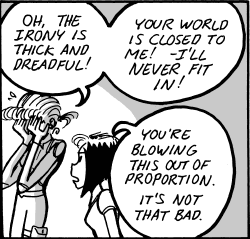
|
